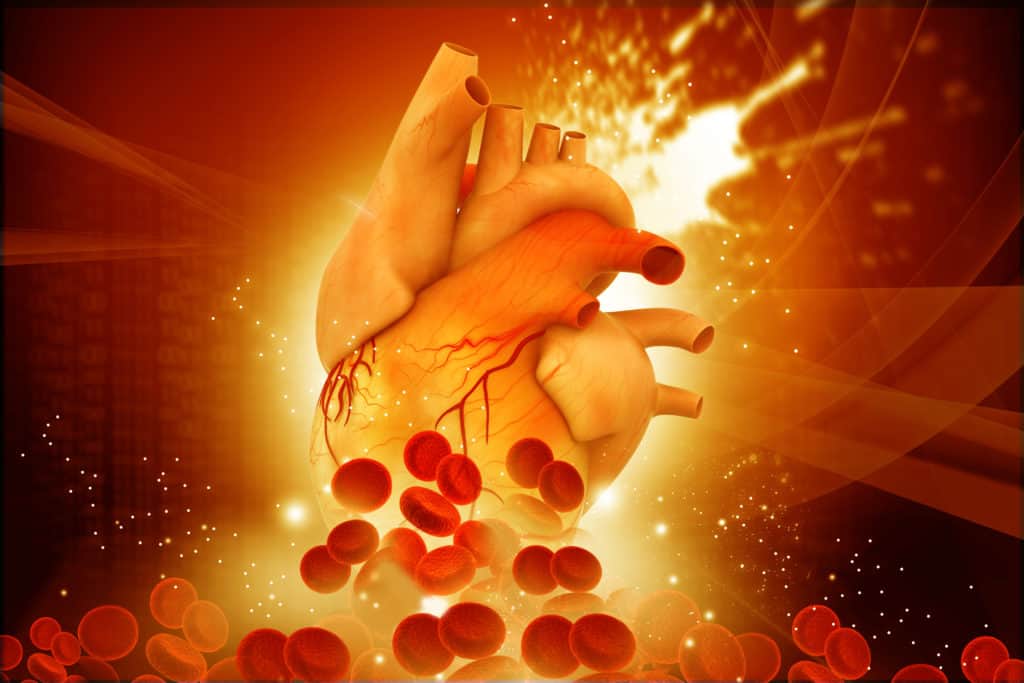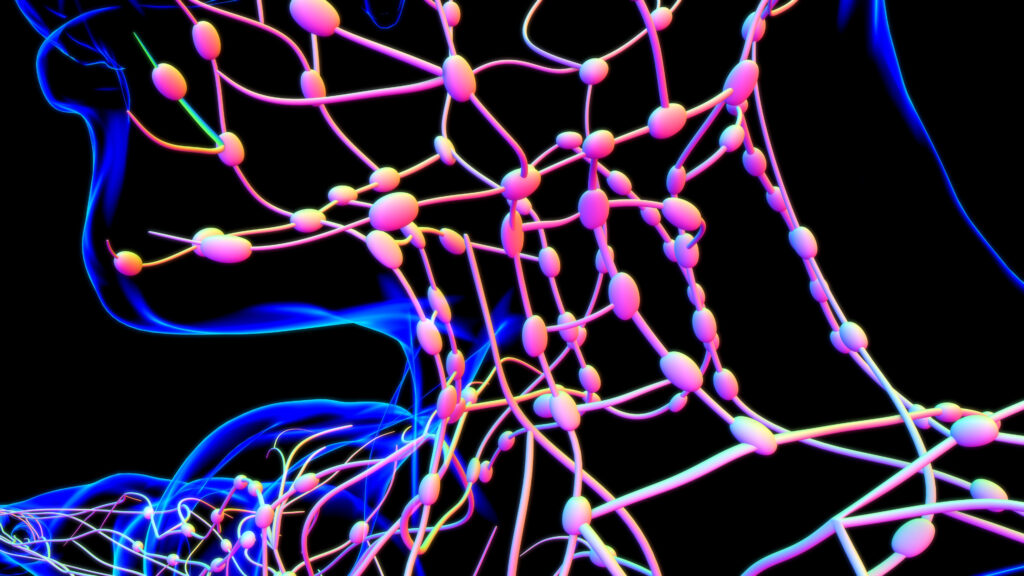Our body goes through many changes as we start to get older. This, of course, includes the heart and blood vessels. While many changes are common and don’t pose a risk, some changes due to ageing can be worsened by factors regarding your lifestyle. If these risks are not reduced or treated, they may lead to heart disease.
How does the heart work?
Our heart has two sides: the right is responsible for pumping blood to the lungs for oxygen and carbon dioxide exchange and the left is responsible for pumping the oxygen-rich blood to the rest of the body.
The blood journeys out of the heart, through the aorta and then moves through the arteries. They branch out and become smaller as they go into the tissues, where they become capillaries. In the capillaries, the blood gives up the oxygen and other nutrients to the tissues and picks up the carbon dioxide and other waste. Following this, the blood journeys back through the veins and returns to the heart.
How does age affect the heart?
- In some people, there is a slight increase in the size of their heart (gov, 2018), especially in the left ventricle. The heart wall may thicken, which may mean that the blood chamber can hold less blood, despite the size increase.
- The heart has a natural pacemaker system – the sinoatrial node. As you grow older, some of the pathways of this system can develop fat deposits and fibrous tissue. These changes can result in a slower heart rate (Larson al., 2013).
- Other changes in the heart include the increase of lipofuscin production in older people (Terman & Brunk 1998). As you age, the heart muscle cells slowly degenerate. The valves become stiffer, and a heart murmur caused by heart valve stiffness is fairly common in older people. Fortunately, it doesn’t pose a serious risk of death (Kakimoto al., 2019).
- Finally, any rhythm changes of the heart can be seen on electrocardiograms (ECG). An older individual may have more irregularities or abnormal rhythms than a healthy younger person. Arrhythmias and atrial fibrillation are more common among older people and could be due to several heart diseases.
How does age affect blood vessels?
- As you age the entire structure of your blood vessels change. This encompasses the main artery from the heart (aorta) and the smallest of blood vessels (capillaries). They become thicker, stiffer, and less flexible (Xu al., 2017). This may cause a slower rate of exchange for the nutrients, oxygen/carbon dioxide and wastes.
- In terms of the heart, due to those changes, the blood pressure may increase and make the heart work harder. This can lead to the heart becoming thicker (hypertrophy). Most older people see a moderate increase in blood pressure.
- In our body, we have receptors called baroreceptors. They monitor the blood pressure and ensure that the blood pressure is maintained at a constant level when we are doing various activities. Unfortunately, these receptors become less sensitive with age (Monahan, 2007, DiFrancesco al., 2018) so people may experience more dizziness when they change position (e.g., going from lying to standing) because there is less blood flow to the brain due to pressure change.
How does age affect the blood?
- As you age, there is a decrease in total body water. With this, there is less fluid in the bloodstream, so the blood volume may decrease. A study showed lower blood cell counts in older people (Kubota al., 1991).
- Older age also means that the reproduction speed of red blood cells is decreased (Huang al., 2011), which may lead to anaemia and blood loss.
What are the effects of heart and blood vessel changes?
Regardless of your age, the heart continues to pump enough blood around your body to ensure a steady supply of oxygen. However, under certain circumstances, an older heart may face disruptions and may not be able to pump the blood effectively enough. Some of these factors may be:
- Use of certain medicines
- Stress
- Physical exertion
- Illnesses
- Infections
- Injuries
Some heart problems that may arise as you age are as follows:
- Angina
- Arteriosclerosis
- Coronary heart disease
- Heart attack
- High blood pressure
What can I do to prevent and reduce the risk of heart disease?
There are several lifestyle changes that you are in control of that will help mitigate the risk of developing heart disease at an older age. To help yourself you should lower your blood pressure and cholesterol levels. Get ahead of developing diabetes through better diet and exercise and quit smoking.
Eating healthy will ensure that there is a balance in the amount of saturated fat and cholesterol that you eat. Combining that with a good amount of exercise helps prevent obesity and controls blood sugar levels, and you are doubling your efforts in improving your health and preventing an increased risk of heart disease.
Exercise is also beneficial as it helps guarantee the normal functioning of your muscles and joints. Plus, the added adrenaline and serotonin boosts your mood and reduces stress and emotional distress.
Prevention and early detection of heart disease at your age
The best weapon in your arsenal against developing heart disease is early detection. In our previous blog, we have discussed the best course of action regarding your heart health as early as your 20s. In this post, we want to highlight just how important it is to have regular checks.
Even the World Health Organisation has said that most cardiovascular diseases can be prevented through addressing lifestyle changes as mentioned above. Early detection is also imperative to detect heart disease however it is also useful in detecting various forms of cancer (Cancer Research UK, 2021):
- More than 9 in 10 bowel cancer patients will survive the disease for more than five years if diagnosed at the earliest stage.
- More than 90% of women diagnosed with breast cancer survive their disease for at least five years if caught at the earliest stage compared to around 15% for women diagnosed with the most advanced stage of the disease.
- 90% of women diagnosed with the earliest stage ovarian cancer survive the disease for at least five years, compared to around 5% for women diagnosed with the most advanced stage of ovarian cancer.
- More than 80% of lung cancer patients will survive for at least a year if diagnosed at the earliest stage, compared to around 15% for people diagnosed with the most advanced stage of the disease.
We all want to enjoy a long and healthy life, however, most of us may not notice any symptoms of heart disease until it is too late. Luckily, with the technology that is available at Echelon Health, we are able to use MRI, CT and ultrasound scans to detect up to 94% of diseases that may lead to premature death.
At Echelon Health we offer many comprehensive health assessments including Healthy Heart in which the following tests are performed:
- Blood tests
- ECG
- CT Coronary Angiogram
- CT Heart
These tests help detect various heart diseases including coronary heart disease, atheroma, and more. When it comes to our Healthy Heart assessment, we provide the gold standard. Nothing in the assessment is based on statistical risk analysis; the tests look inside the individual and provide them with personal insight into their own body. Preventive Health Assessments are important even if you are symptom-free.
But if you are considering a fully comprehensive assessment then our Platinum assessment is the way to go. It can detect up to 92% of preventable causes of death using a combination of the best imaging technology with the following scans and tests:
- Blood Tests
- ECG
- CT Aorta
- CT Heart
- CT Coronary Angiogram
- CT Chest
- CT Pelvis
- CT Virtual Colonoscopy
- CT Bone Density
- EOS
- CT Upright Skeleton
- MRI Brain
- MRI Cerebral Artery Angiogram
- MRI Carotid Artery Angiogram
- MRI Prostate
- Ultrasound Thyroid
- Ultrasound Testes/ Ovaries
- Digital Mammogram
- Full Body Mole Screen
Your body will be checked head to toe in extraordinary detail and your results will be analysed by the best experts in their fields to ensure that nothing is missed.
If you have any questions don’t hesitate to contact our team or check out our brochure for more information on all the health assessments offered by Echelon Health.
Sources:
Nia.gov (2018). Heart Health and Aging. Available at: https://www.nia.nih.gov/health/heart-health-and-aging#how (Accessed 08/02/2022).
Larson, E. D., Clair, J. R. S., Sumner, W. A., Bannister, R. A., & Proenza, C. (2013). Depressed pacemaker activity of sinoatrial node myocytes contributes to the age-dependent decline in maximum heart rate. Proceedings of the National Academy of Sciences, 110(44), 18011-18016.
Terman, A., & Brunk, U. T. (1998). Lipofuscin: mechanisms of formation and increase with age. Apmis, 106(1‐6), 265-276.
Kakimoto, Y., Okada, C., Kawabe, N., Sasaki, A., Tsukamoto, H., Nagao, R., & Osawa, M. (2019). Myocardial lipofuscin accumulation in ageing and sudden cardiac death. Scientific reports, 9(1), 1-8.
Xu, X., Wang, B., Ren, C., Hu, J., Greenberg, D.A., Chen, T., Xie, L. and Jin, K., (2017). Age-related impairment of vascular structure and functions. Aging and Disease, 8(5), p.590.
Monahan, K. D. (2007). Effect of aging on baroreflex function in humans. American Journal of Physiology-Regulatory, Integrative and Comparative Physiology, 293(1), R3-R12.
DiFrancesco, M.W., Shamsuzzaman, A., McConnell, K.B., Ishman, S.L., Zhang, N., Huang, G., Hossain, M. and Amin, R.S., (2018). Age-related changes in baroreflex sensitivity and cardiac autonomic tone in children mirrored by regional brain gray matter volume trajectories. Pediatric Research, 83(2), pp.498-505.
Kubota, K., Shirakura, T., Orui, T., Muratani, M., Maki, T., Tamura, J., & Morita, T. (1991). Changes in the blood cell counts with aging. Nihon Ronen Igakkai zasshi. Japanese Journal of Geriatrics, 28(4), 509-514.
Huang, Y.X., Wu, Z.J., Mehrishi, J., Huang, B.T., Chen, X.Y., Zheng, X.J., Liu, W.J. and Luo, M., (2011). Human red blood cell aging: correlative changes in surface charge and cell properties. Journal of cellular and molecular medicine, 15(12), pp.2634-2642.
Cancer Research UK (2021). Why is early diagnosis important? Available at: https://www.cancerresearchuk.org/about-cancer/cancer-symptoms/why-is-early-diagnosis-important (Accessed 08/02/2022).



